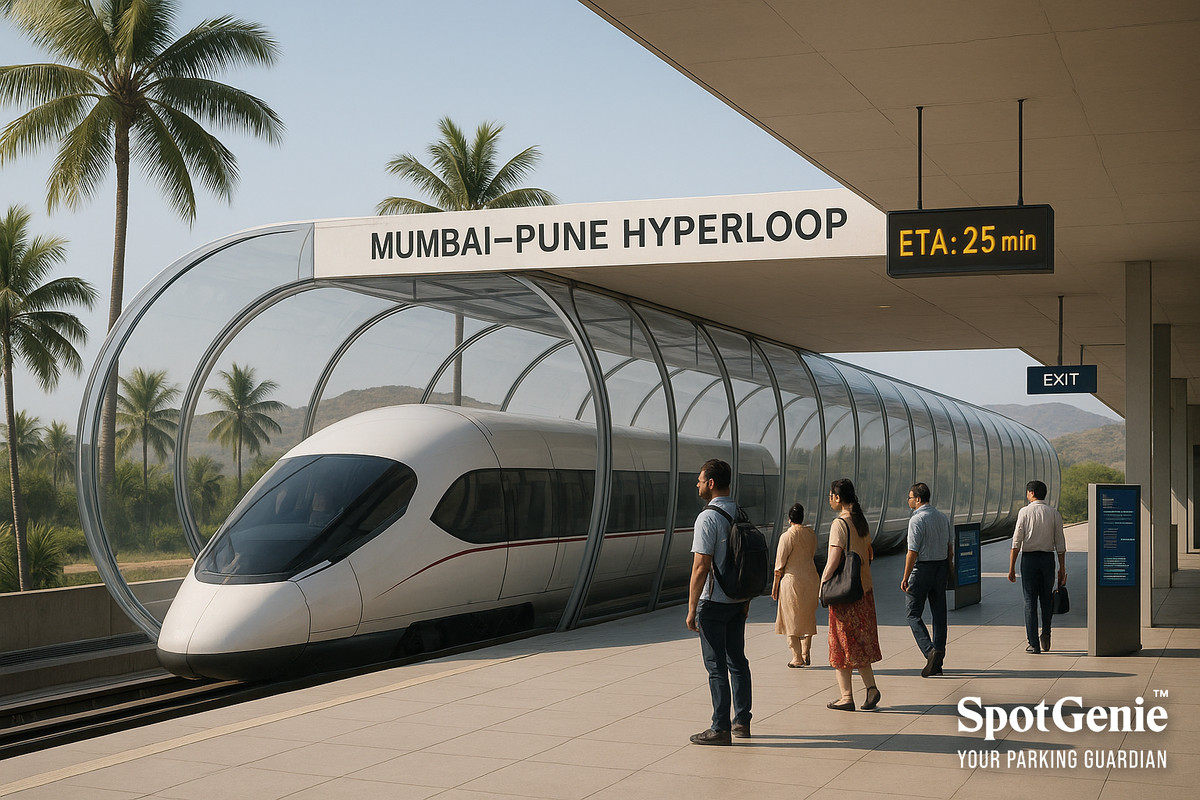Hyperloop Feasibility and Roadmap in India
Discover the Mumbai–Pune Hyperloop feasibility study, exploring the high-speed travel concept that could slash journey times to under 25 minutes.

Mumbai-Pune Hyperloop: Could Your Commute Go Supersonic?
SpotGenie Gyaan explores the futuristic possibility of Hyperloop travel in India-and what’s really happening behind the buzz.
What Is Hyperloop-and Why Is It So Fast?
Imagine traveling from Mumbai to Pune in under 25 minutes. That’s the promise of the Hyperloop—a pod-based transport system inside vacuum tubes that can reach speeds of over 1,000 km/h. With minimal air resistance and magnetic levitation, Hyperloop offers the speed of air travel with the convenience of train boarding.
Where India Stands with the Hyperloop Project
In 2018, Virgin Hyperloop One signed an MoU with the Maharashtra government to explore a Mumbai-Pune Hyperloop corridor. The proposed project gained attention at the Magnetic Maharashtra investor summit. A pre-feasibility study was launched by PMRDA and found the route viable.
The proposed corridor would stretch about 150 km, potentially linking Mumbai and Pune in 25 minutes—compared to the 3-4 hours it currently takes by car or train.
What’s Happened Since Then?
- A successful test was conducted by Virgin Hyperloop with passengers in Nevada, USA in 2020.
- In India, the Mumbai-Pune corridor remains in the feasibility assessment stage. No land acquisition, construction, or official tendering has begun.
- As of mid‑2025, the government has not announced concrete timelines or funding allocations.
Why It’s Still on the Radar
- Strategic Route: High commuter density and economic value make Mumbai-Pune an ideal testbed.
- Government Interest: MMRDA continues to keep the project on its long-term smart transport roadmap.
- Tech Enthusiasm: Startups and public policy institutes like WRI India have supported early-stage planning.
Major Challenges Ahead
- Cost: The estimated cost runs between ₹1–2 lakh crore.
- Land & Environmental Clearance: A major hurdle for any mega-infra project in India.
- Safety & Regulatory: India lacks certification bodies for such new tech, and public acceptance remains low.
What Citizens and Policymakers Should Know
- This is not yet a confirmed project—but one with serious future potential.
- Citizens can advocate for transparency in feasibility reports, and demand data-driven decision-making.
- Urban planners should keep multi-modal integration in mind: stations near metro hubs, airports, and public transit lines will be key.
Conclusion
The Hyperloop may not arrive tomorrow—but the vision of a 25-minute Mumbai–Pune journey is inching closer to possibility. With feasibility studies in progress, India may just pioneer high-speed intercity mobility in a bold new direction.
Follow us on:
🅾 Instagram |
ⓕ Facebook |
𝕏 X |
▶️ YouTube |
🟢 WhatsApp



